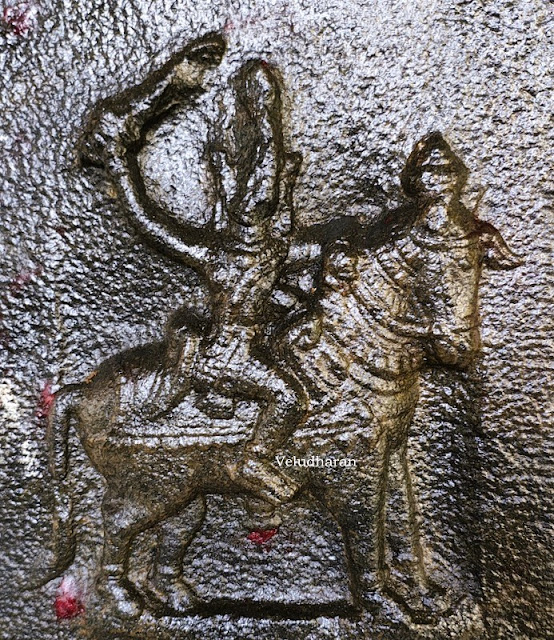16th
April 2019.
After
Ulundandar Temple’s visit our next destination was to Parikal. On the way to
Parikal, it was suggested to Visit an old Shiva and a Perumal Temple at
Padur. Since Padur is on the way to
Parikal, visited the Shiva temple first and then the Perumal Temple. Local people guide us to this temple if we asks for Sri Prathyangira Devi Temple.
Moolavar : Sri Agastheswar
Consort : Sri Abithakusambigai
Some
of the salient features of this temple are…
The
temple is facing east with an entrance arch on south side. The temple do not
have Rajagopuram. Ambal
sannidhi is facing south in the abutting artha mandapam.
In
the prakaram sannadhi for Ganapathy, Valli Deivanai sametha Subramaniar, Thirugnanasambandar in dance posture and a donor statue. The Prathyangira
Devi sannadhi is near to the south side entrance. The Local people Knows more about Prathyangira Devi than Lord Shiva of this temple. On no moon day "Nikumbalaa" Homam will be conducted in which, Red Chilli, fruits and vasthram are offered.
ARCHITECTURE
The temple consists of sanctum sanctorum, antarala and artha mandapam. There is a 2 Pillar mandapam at the south side entrance of main sanctum. The sanctum is on a prati bandha adhistanam with virutha kumudam. A Vesara Vimanam is on the sanctum. An Yazhivari is above the Kumudam.
HISTORY AND INSCRIPTIONS
Parantaka Chozha-I’s brother and the Rashtrakuta King Kannara dhevan ( to be checked ), Kulothungan-II, Rajarajan-III, Seenatharayan, and Krishnappa Nayaka, who ruled Senji period inscriptions mentions about the donation of Lands, Villages, differing of Taxes, burning of perpetual lamps. The Chozha King Kulothunga Chozha donated this Village Padur to Brahmins and called as Chaturvedi mangalam. From the above details, this temple might have been existed before 11th Century. 14th to 16th Century Vijayanagara Nayak period inscriptions are also found on the kumudam, inscribed during renovations/ Thirupani.
Parantaka Chozha-I’s brother and the Rashtrakuta King Kannara dhevan ( to be checked ), Kulothungan-II, Rajarajan-III, Seenatharayan, and Krishnappa Nayaka, who ruled Senji period inscriptions mentions about the donation of Lands, Villages, differing of Taxes, burning of perpetual lamps. The Chozha King Kulothunga Chozha donated this Village Padur to Brahmins and called as Chaturvedi mangalam. From the above details, this temple might have been existed before 11th Century. 14th to 16th Century Vijayanagara Nayak period inscriptions are also found on the kumudam, inscribed during renovations/ Thirupani.
Ashta Bandhana Maha Kumbhabhishekam was held in 1988 in that Kanchi mutt Sri Jayendra Saraswathi
Swamigal also participated.
LEGENDS
Agasthiyar and Shukracharya worshiped Lord Shiva of this temple. As per the legend, Shukracharya was the Kulaguru for the Mabali Chakravarthi. When Vishnu in Vamana avathar was about to get the three feet of land, Shukracharya advised Mabali not to give, even after Knowing that Vishnu only came as Vamana. As per the law of Sin, obstructing the giving gift to some one is also a sin.
To get rid of the sin caused Shukracharya worshiped Lord Shiva of this temple. The stucco image of this sthala purana is on the south side wall of the prakara. Agasthiyar found out this swayambhu Shiva Linga, installed and worshiped. Hence Lord Shiva is called as Agastheeswarar.
TEMPLE TIMINGS:
The
temple will be kept opened between 07.00 hrs to 09.00 hrs and 17.00 hrs to
19.00 hrs.
HOW TO REACH:
Padur
Village is on the Villupuram to
Kallakurichi Road.
The
Temple & The village Padur is about 28 KM from Villupuram and 10 KM from
Ulundurpet.
LOCATION:CLICK HERE
Stucco Gajalakshmi
---OM
SHIVAYA NAMA---

























































